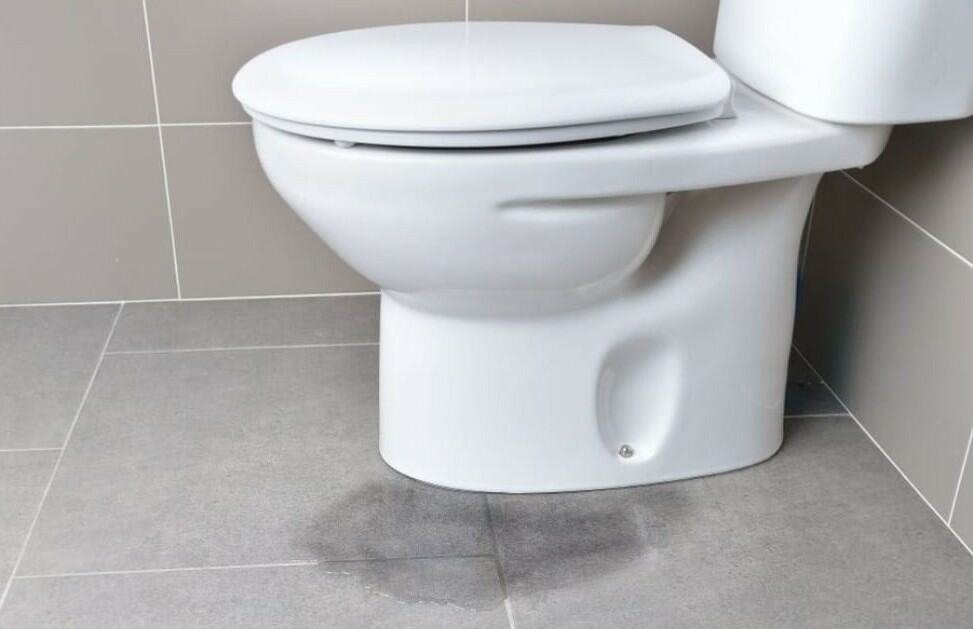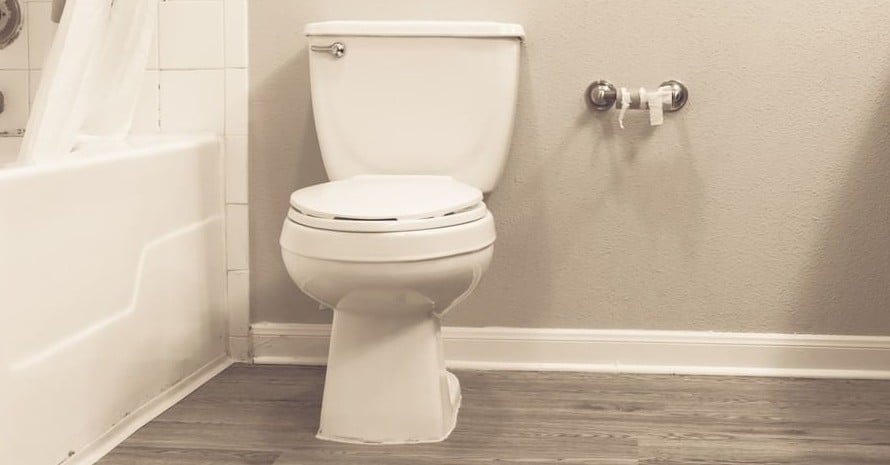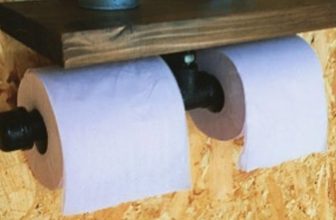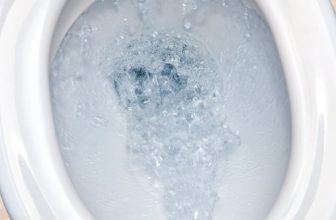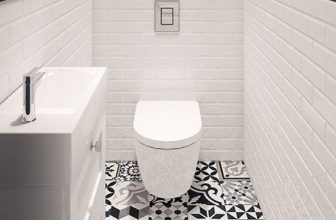Toilet leaking at base always looks disturbing, especially if you live in a block of flats as there is always a risk to flood the neighbors. How do you know that plumbing is defective until it is too late? In fact, there are a lot of signs, such as odd sounds from the bathroom, flourishing mold, or low pressure.
Even a high water bill might signal a leak. Leaks always have two types of sources, they are faulty pipes and non-hermetic joints. In this article, I explain how to check your plumbing consistently and which malfunctions you can fix yourself.
Quick Guide on Toilet Leak Repairs
- Turn off the water supply, empty the toilet tank, and drain the bowl.
- Open the tank lid, remove the tank bolts and take the tank off.
- Сheck the gasket between the tank and the bowl, change it if it is not hermetic anymore. Put the tank back.
- Remove the flange bolts and take the toilet off.
- Check the wax ring, and replace it if it is worn out.
- Put the toilet back and tightly fix the bolts.
Water Leaking? Stop Using the Toilet
Water on the floor is a serious sign of malfunction, which might mean not only a close perspective of flooding the neighbors but also long and boring repair that includes turning off the water supply and no ability to use sanitation. Long repair makes being at home barely tolerable, so the best method of repairing is prevention.
For a better understanding of what can go wrong, let’s consider the toilet’s construction first. The toilet connects to the water supply system by the toilet tank. There is a system inside that controls the level of water and prevents water from pouring over. The toilet tank is connected to the bowl with two bolts and a gasket, which makes these joints hermetic.
The toilet bowl is connected to the sanitation through the wax ring which prevents leaks at the base. Two flange bolts tightly fix the whole construction on the floor.
Signs of a Possible Water Leak
Water on the floor is the final sign of failure. How could you know before things got that bad? Here is the list of signs of possible hidden leaks.
- Increased water bills are the thing you definitely should pay attention to. A thin water jet can significantly influence your monthly budget. What if you have more than one?
- Low pressure may mean less amount of water can reach the point it is supposed to. In this case, malfunction usually concerns the water supply system.
- Mold is a common issue for bathrooms as it “likes” humid and warm places. Leaks make your bathroom even more attractive for fungus, provoking it to grow bigger.
- Leaks might damage wallpapers both by raising dampness and by direct contact. The same applies to painted surfaces, you might notice stains or peel on the walls if there is a leak nearby.
- Unusual sounds from the pipes signal different kinds of malfunctions, including leaks.
- Other signs of damaged pipes are discoloration, stains, flaking, or visible rust. Take a look at accessible pipes, and if you notice something from the list, it means the corrosion process, which always leads to leaks, has started.
Reasons Why Toilets Leak at the Base
A puddle of water near the toilet base can mean several malfunctions, not only because of toilet bowl leakage.
- A noticeable difference between the temperature of the water inside the toilet tank and the temperature in the bathroom may cause сondensate. Drops of water appear on the toilet tank or on the bowl and drain down on the floor
- Two bolts attach the toilet to the floor, and if you see water near the base, these bolts may be loose. The water flows from the gap between the floor and the toilet base.
- Siphon connects to the floor through the wax ring, this component may wear down over time and start leaking.
- Toilet tank leaking may occur because of the gap between the bowl and the tank. There are two things to check: the gasket, which may also wear down, and the bolts, which keep the tank and the bowl together.
Areas to Check When Toilet is Leaking
There are two common types of malfunctions that might lead to leaks: loose pipes and insecure joints. Searching for the leak may take some time, I suggest an algorithm to check the plumbing quickly and consistently.
- The toilet tank might let the water on the floor when it doesn’t connect to the bowl properly. There are two bolts on the bottom of the tank which tighten the tank to the bowl. If they are loose, here is the source of the leak.
- Loose flange bolts are also the reason why you have a puddle on the floor. They provide a close connection between the bowl and the floor, and when they are not fixed properly, water flows not only to the sanitation but also to the floor.
- A wax ring provides a hermetic joint between the toilet and the sanitation. It lasts up to 30 years, so if your toilet is old enough, it might appear pretty worn out and cause a pretty big leak.
How to Fix a Leaky Toilet
I described where the water on the floor might come from, and now let’s see what you can do about it.
- Pay attention to the temperature in the bathroom or use the tank concentration liner which helps to regulate the temperature inside the tank. You can also install an exhaust fan, сondensate may be a sight that your ventilation system is overwhelmed. Before you choose what to do, you can just leave the door semi-open to let fresh air in the room and reduce the humidity.
- Check if the toilet is properly fixed on the floor. There are two flange bolts that keep it, and if you notice they are loose, tighten them. All you need is a pair of pliers or a small wrench, but be careful: you may crack the porcelain if you try too hard.
- The next thing to look at is the toilet tank and bowl connection. First of all, try to tighten the tank bolts, the water may flow from the gap between the tank and the bowl. The second step is to change the gasket. You need to stop the water supply and empty the tank, after that pull the bolts and remove the tank. Now you can change the tank-to-bowl gasket, don’t forget to clean the porcelain before putting the tank back.
- If nothing of the above worked out, you probably need to change the wax ring. Now you have to turn the water off and drain the toilet, then pull the flange bolts and remove the toilet. Remove the old wax ring with a putty knife, and attach a new one. Install the toilet and turn on the water supply.
FAQ About Toilet Leak Repairs
Why is my toilet leaking at the base?
There is a variety of reasons why the toilet leaks at the base and the source is not always located in the base. A significant difference between air temperature and the temperature of water in the toilet tank may cause condensate which flows down on the floor. The source of the leak might also become a tank-bowl connection, loose flange bolts and a gap between the toilet and the floor, and a worn-out wax ring.
How long does a toilet wax ring last?
Compared to other components, a wax seal serves pretty long, its life lasts up to 30 years, without needing to be changed. For example, the fill valve lasts for about five years, and gaskets’ lifespan depends on the quality of water but they usually need to be changed every 10 years. However, if you notice toilet seal leaks, you might need to replace it earlier.
How to fix a leaking toilet?
The first thing to do is to identify the source of the leak. You might need to take the toilet tank off and replace the gasket between it and the bowl. If the problem is in the connection between the bowl and the floor, there are two possible things to do: tighten the flange bolts or take the toilet off and replace the wax ring.
How to Fix Leaking Toilet Yourself
Any joint in the toilet system might be the source of the leak. Repairing some of them takes no more than 15 minutes, like tightening the flange bolts, some require more time and physical strength, like when you have to replace the wax ring. In any case, the first thing you should do is to turn off the water supply and empty the toilet, both the tank and the siphon. Then consistently check such points: the bolts inside the toilet tank, the gasket between the tank and the bowl, and the wax ring between the bowl and the sanitation. The last thing to do is to tighten the flange bolts properly as loose bolts might create a gap between the toilet and the floor and let the water out.
